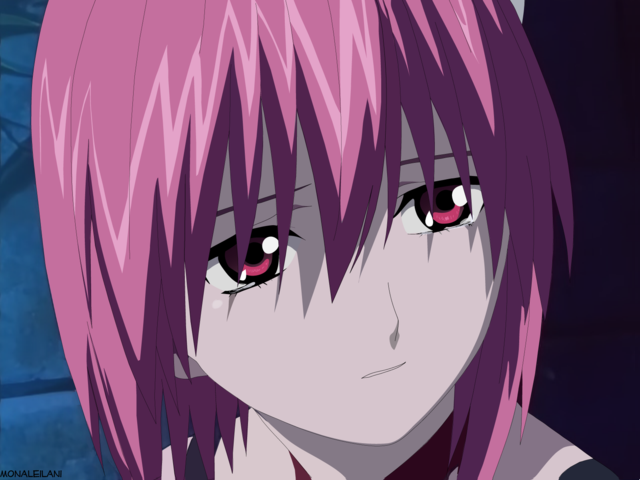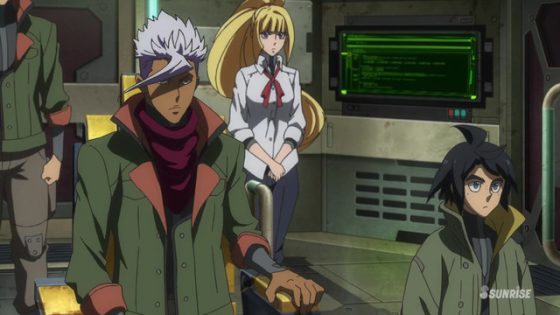
A few months prior to uploading this article, we posted another article in regards to how anime is more progressive than people give it credit for. As a semi-continuation to that article, we thought it would be best to explore how anime has progressed in portraying discrimination and prejudice. As we all know, the industry’s home nation of Japan is largely homogenous and they exclusive speak, read, and write one language, but that doesn’t mean it doesn’t have a history of prejudice, nor do they not know how to portray it in their stories. Granted that Japan’s history with such instances may not be the same as lets say in America, Europe, or Africa, we can’t deny that many of their animated works in recent times have found ways to make it universal for all audiences.
Elfen Lied
If any modern anime kicked off the harsh portrayals of prejudice in anime, it’s certainly without a doubt, the controversial Elfen Lied. In this hit series, the world is seeing an increase of a new race known as the dicloni, who have vectors, or small horns on their heads. So, what’s the worst that can happen? It also gives them telekinetic powers that can rip you in half. As a result, those who develop such features are subjected to malicious hostility and violence for just being born the way they are. As a result, Lucy, the main character, is conditioned to become a remorseless killer. (Un)Fortunately, she suffers a shot to the head and it renders her to an infantile state. Thanks to the kindness of Kouta, who looks after her, she learns the value of kindness and love.
Mobile Suit Gundam Iron-Blooded Orphans
Iron-Blooded Orphans portrays discrimination and prejudice through economics and class warfae opposed to race or religion (though in many nations, class warfare and race do go hand-in-hand). Due to super strict economic restrictions on Mars (hopefully Elon Musk is taking notes here when he starts his Mars colony), everybody is living in third world conditions and instead of going to school, children are going to war! No, nobody is putting a gun to their head and forcing them to fight. Many of the children who fight for Tekkadan are fighting out of their own free will. When we say free will, we say it loosely because becoming a child soldier is more or less the ONLY way for children on Mars to provide for their families (especially when many of them are orphans). As a result of these embargoes and sanctions, not only are children getting killed, 95% of them are illiterate! When audiences are exposed to life on Earth in this series, they’re living comfortably and just ignore the problems the sanctions are causing on the people of Mars.
Cop Craft
Cop Craft is certainly a unique anime when you combine fantasy with Scarface, the classic cult film starring Al Pacino. Instead of former Cuban prisoners taking over the drug trade in Miami, replace it with elves (or Semenians, but they look like elves) trading in weaponized fairies in a futuristic Los Angeles. As seen in this anime, the Seminians (who are also colloquially referred to as aliens) are seen by some of the human population with mis-trust. A certain number of the residents of San Teresa are against their presence and feel threatened. It’s an obvious jab at the alt-right’s anti-immigration rhetoric. Based on what the anime has portrayed so far, a majority of the Seminians that Kei and Tilarna interact with tend to be criminals, and the only good Seminian prominently featured is Tilarna. We’re not saying that the anti-immigration people are right and that they should build a wall, but when a group of people are being featured in the media as criminals, it doesn’t help anyone.
Carole & Tuesday
Emphasized in the second half, Carole & Tuesday largely portrays events that take inspiration from real life, most notably Donald Trump’s public statements in regards to illegal immigration and refugees. Valerie, Tuesday’s mother, is pretty much the anime’s equivalent to Trump as she doesn’t want Mars to accept refugees from Earth, seeing them as a burden. Though she isn’t the President of Mars, you see that MICE (obviously the Mars equivalent to America’s ICE), is raiding people’s homes who have overstayed their visas and putting them in jail-like facilities and without providing them legal representation (are we to assume that there’s such a thing as “right to an attorney on Mars?” If so, somebody suggest it to Elon Musk right now for Mars’ future constitution!). While race isn’t verbalized in this series, just by using imagery alone, audiences can see how this anime does a great job of portraying racism in regards to anti-refugee/immigrant rhetoric.
Final Thoughts

We’re not exactly saying anime is becoming PC or woke, but to use older terms that make more universal sense and less controversial, it’s spreading awareness and a message. A lot of what’s portrayed is fiction, but the actions and the foundations behind them are real. When it comes to prejudice, the root of it is nothing more than just fearing what we don’t understand. In other instances, it’s about trying to show off one’s dominance or superiority when in the end, everyone’s equal. Through some of the anime we listed, we’re sure we can learn from them. As a legendary duo once said, be excellent to each other.
Recommended Post


